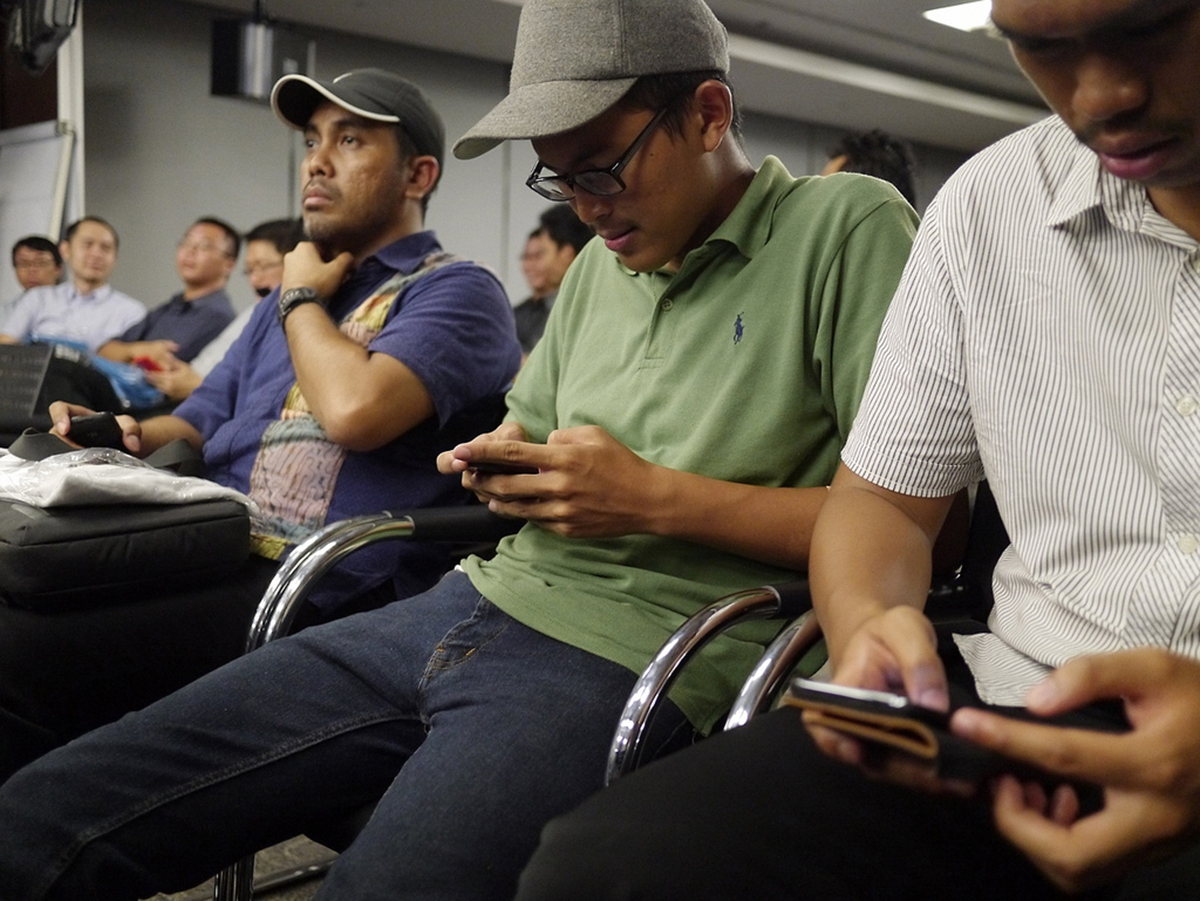"Next summer we're going to Viagra Falls."
"Honey, did you pick up the corpses?" "I mean cherries."
"I'm taking the kids down to the Christmas mart to see Satan."
"Come over for a sex." "I mean sec!"
Just about everyone who does text messaging has had some awkward or embarrassing experience caused by autocorrect. Androids, Kindles, and iPhones attempt to compensate for the inefficiency that comes from having no physical keyboard with predictive text. Just enter the first few letters of a word and the operating system suggests a whole word for you. On many cell phones, if you just keep typing, the suggestion replaces what you typed. Sometimes, however, predictive text does not predict very well. Autocorrected messages to your parents, to your boss, or to your close friends, or business text messaging, can be a disaster if you don't proofread.

The real downside of using predictive text in online text messages and word processing, however, is that you can largely forget how to write. A good example of how this can happen comes from China.
Character Amnesia Predates Cheap Cell Phones
In China, there was predictive text long before there were cell phones. In the 1950's, the newly empowered Communist government issued edicts about everything from choosing your mate to greater steel production. Local typists had to make copies of government orders for everyone to read. Typing in Chinese, however, is not a simple process. At that time, typewriters had 2450 keys. These keys were organized by shape; the characters for "apple" might be next to those for "aardvark." The top speed for a typist was about 25 characters (maybe 10 words) a minute.
READ Teens and Texting: A Whole New World
Typists began to rearrange their key trays so characters they used together were closer together on the keyboard. "American," for example, was moved next to "imperialist." "Increase" was moved next to "production." In 1956, a typist created a keyboard that was three times more efficient, and in the 1970's, before Americans even dreamed of autocorrect, the Chinese had a system of TV displays that would show a character and eight or so characters that were likely to follow it. By 2000, the Chinese began to use a QWERTY keyboard to type out a sound with a computer screen showing the character, but there was an unexpected side effect.
Going Back to Writing by Hand to Prevent the Problems Caused by Predictive Text
The Chinese government has taken steps to correct the problems caused by their version of predictive text. Experts at Beijing Normal University have proposed requiring elementary school children to do all their homework in longhand. College students will be required to do half of their writing assignments by hand. The university also will sponsor calligraphy competitions.
China is tackling its problems with character amnesia by going back to much older technologies. But do English speakers need to go back to writing in longhand, too?
From Predictive Text Back to Longhand
Experts believe that the United States suffers some of the same problems from predictive text technology as China. Here are some examples.
In 2013 Pam Mueller, a PhD student in psychology at Princeton University, forgot to take her laptop to class, and was forced to take notes with pen and paper. She found that she got more out of the class. She mentioned this to her supervisor Daniel Oppenheimer, who is now at the University of California at Los Angeles, and he recalled that he had frantically tried to take notes of everything everyone said at a meeting, but he had no idea of what people were talking about. Mueller and Oppenheimer decided to conduct some experiments comparing how well students learned from notes taken on a laptop compared to notes taken by hand.

Mueller and Oppenheimer found that students who had laptops tried to take notes from their professors verbatim, without stopping to think about what the professors were saying. Students who were limited to taking notes by hand were forced to consider the meaning of the lecture, reframing it into their own words, and learned more as a result.
The problem, Mueller and Oppenheimer believe, is not the laptops themselves. The problem is the way students use them. If students slow down and record notes on their laptops in their own words, they can learn just as much as when they take lecture notes by hand.
There are similar problems with electronic textbooks.
- Even though modern ebook readers have the same display as old-fashioned print, the experience of reading them is not the same. With a paper book or magazine, there are multiple physical cues that tell us where we are reading. You might remember a certain passage was half or a third of the way down a page. On a Kindle or an ebook reader, we don't have the same signals that keep us from wandering through the text, missing key passages. Researcher Anne Mangen at the Reading Centre at the University of Stavanger in Norway found that readers were twice as proficient at putting 14 plot events in the right sequence after reading a print book as after reading the same book on Kindle.
READ Spending 50 Minutes A Day On A Cell Phone Changes Brain Activity
- Electronic books come with embedded videos and links intended to enhance content. Clicking on these links, however, can be distracting. Taking notes from ebooks is unwieldy. Even if one electronically highlights text in the ebook, it is hard to find the highlighted passages without rereading, at least skimming, the entire text.
- Reading an ebook does not generate the same sense of empathy as reading a print book. In another study, Dr. Mangen had 145 university students to read a story about a tragic event either in a booklet or on an iPad. When the students were told it was a true story, the students who read it on an iPad were less likely to express empathy for the characters.
Hyperlinks that pull away from a story, ads flashing in the margins, and the clickety clack of our keyboards distract us from the kind of sustained reading that is necessary to achieve in-depth understanding. Learning letters and learning words by hands changes our brains in more ways than learning them on a keyboard. The old ways of reading and writing offer understanding in greater depth than simply typing on a keyboard and reading from a screen.
- Aiken E. G., Thomas G. S., Shennum W. A. (1975). Memory for a lecture: Effects of notes, lecture rate, and informational density. Journal of Educational Psychology, 67, 439–444.
- Barak M., Lipson A., Lerman S. (2006). Wireless laptops as means for promoting active learning in large lecture halls. Journal of Research on Technology in Education, 38, 245–263.
- .
- Photo courtesy of nseika: www.flickr.com/photos/nseika/8880813114/
- Photo courtesy of zionfiction: www.flickr.com/photos/zionfiction/14229163349/
- Photo courtesy of gepat: www.flickr.com/photos/gepat/172551535/


Your thoughts on this